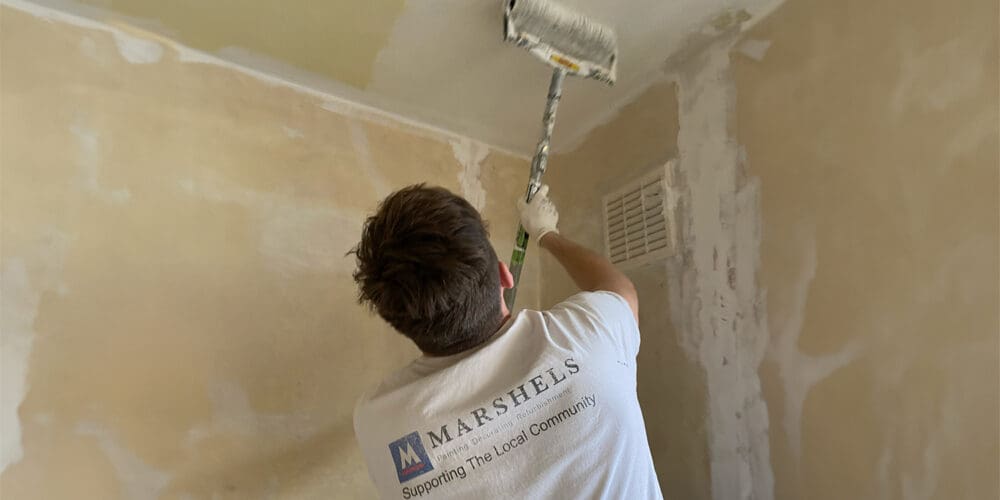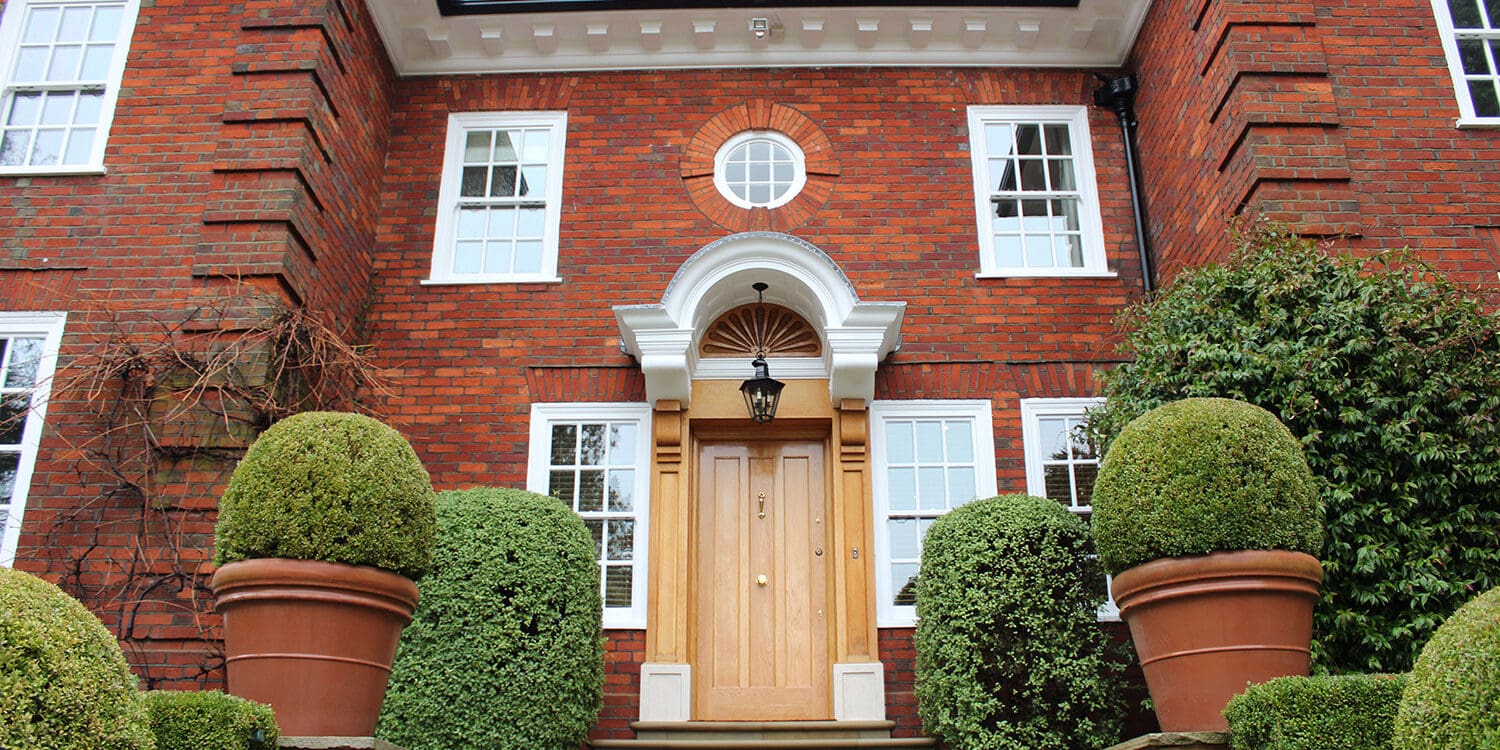Renovating a Grade 2 listed building can be an exciting yet delicate task. These buildings are protected for their historical and architectural significance, meaning homeowners must tread carefully when planning any changes. At Marshels, we understand the unique challenges these properties present and are here to guide you through every step of the renovation process. In this blog, we’ll explain what you can and can’t do to a Grade 2 listed building and how our expert team can help.
What is a Grade 2 Listed Building?
A Grade 2 listed building (also known as a Grade II listed building) is a property that has been placed on the National Heritage List for England due to its special interest, warranting every effort to preserve it. Approximately 92% of all listed buildings fall into this category, making them the most common type of listing. These buildings can include homes, bridges, schools, and even telephone boxes – structures that are valuable for their architecture or historical significance.
Being listed doesn’t mean you can’t live in or alter the property, but it does mean you’ll need to follow strict regulations and, often, obtain Grade 2 Listed Building Consent before making changes. You can use The National Heritage List for England (NHLE) to search listed buildings or check the grade of your property.
What’s the Difference Between Grade 1 and Grade 2 Listed Buildings?
In England, listed buildings are classified into different grades to reflect their relative historical and architectural importance. Understanding these differences is crucial when considering any renovations, as the level of protection and the restrictions imposed vary depending on the grade.
Most residential listed buildings fall into the Grade 2 category, but it’s helpful to know how this differs from higher-grade listings, particularly Grade 1 (also known as Grade I), which carries the strictest controls.
Here’s a breakdown of the differences between Grade 1 and 2 listed buildings:
| Feature | Grade I | Grade II |
|---|---|---|
| Rarity | Only around 2.5% of listed buildings | Approximately 92% of all listed buildings |
| Significance | Buildings of exceptional, often national importance | Buildings of special interest, more locally relevant |
| Planning Restrictions | Extremely strict | Still significant, but with greater flexibility |
| Listed Building Consent | Required for almost all changes | Required for alterations affecting character |
| Common Property Types | Cathedrals, castles, stately homes, historic landmarks | Period houses, cottages, terraces, older commercial buildings |
| Typical Owner Profile | Institutions, trusts, public bodies, wealthy private owners | Homeowners, landlords, private property developers |
| Authority Oversight | Often involves Historic England and local authorities | Usually managed by local planning departments |
Grade I Listed Buildings
Grade I buildings are often world-renowned landmarks or English heritage buildings such as:
- Westminster Abbey
- St Paul’s Cathedral
- Chatsworth House
Renovating or altering a Grade I property is extremely challenging. It involves multiple levels of oversight, meticulous heritage planning, and the use of very specific materials and techniques. Owners typically require expert architectural and conservation input for even the smallest changes.
Grade II Listed Buildings
Grade II listed buildings are still protected, but generally allow for more practical changes, especially for residential use. While alterations and repairs still require Listed Building Consent if they affect the building’s character, local authorities are usually more open to sensitive modernisation, provided it’s in keeping with the building’s style and materials.
Examples include:
- Victorian and Georgian homes
- Farmhouses and barns
- Converted chapels or schools
- Timber-framed cottages
The good news? If you own a Grade II listed property, you’re likely to have more renovation flexibility than you would with a Grade I property – but professional guidance is still essential.

Cons of Professional Wall Panel Installation
1. Higher Initial Costs
There’s no denying that hiring professionals will generally cost more than doing the work yourself. Labour, transport, and premium materials all factor into the price. However, this higher upfront investment can pay off in terms of time saved, quality of finish, and the long-term durability of the panelling.
2. Less Personal Involvement
For some homeowners, part of the joy of interior design is getting hands-on. When you hire professionals, you may feel less involved in the practical aspect of bringing your vision to life, though a good installer will still keep you informed and work closely with you to ensure your preferences are met and your vision is brought to life.
3. Scheduling Constraints
Depending on demand, you may have to wait for an appointment or struggle to find someone that can do the work at a time that suits your needs. This can delay your renovation schedule, especially during peak home improvement seasons like spring and early autumn.
What Can You Do to a Grade 2 Listed Building?
Here are a few things typically allowed (subject to appropriate consent) when renovating a grade 2 listed building:
- Internal redecoration: Painting and decorating the interior using breathable paints.
- Minor repairs: Replacing worn areas with like-for-like materials (e.g., timber window repairs using the same type of wood).
- Restoration work: Returning a feature to its original form using traditional techniques and materials.
- Kitchen and bathroom updates: These can often be modernised, especially if they’re in areas that have already been altered.
Always check with your local authority before beginning any work as even seemingly minor changes could require consent.
What Can’t You Do to a Grade 2 Listed Building?
While there are many possibilities, there are some definite no-go areas without express permission:
- Demolishing part of the structure: Even internal walls may be protected.
- Changing windows or doors: Unless they’re beyond repair and replacements are like-for-like.
- Using modern materials: UPVC, concrete render or non-breathable paint can damage the fabric of the building.
- Adding extensions or loft conversions: These may be possible but require detailed planning and approval.
Even attaching items to walls or altering interior finishes could be considered significant changes. Failing to get consent can lead to criminal charges, so always proceed with caution.
When is Listed Building Consent Required?
Listed Building Consent (LBC) is required for any work that affects the character of the building, both inside and out. This includes:
- Structural alterations
- Changes to layout
- Replacing windows or doors
- Removing original features like fireplaces or beams
- Adding satellite dishes or exterior lighting
Consent is obtained through your local planning authority and usually involves submitting detailed plans. Marshels can assist with this process, ensuring compliance while maintaining your vision for the property.
You can find further information on Listed Building Consent from local authorities in your area below:

Can You Paint a Grade 2 Listed Building?
You can usually paint the interior of a Grade 2 listed building, but with restrictions:
- Use breathable, lime-based or clay paints that allow the structure to “breathe”.
- Avoid modern emulsions that can trap moisture.
For exterior painting, permission may be required, especially if:
- You’re changing the colour scheme.
- The paint could affect the building’s fabric (e.g. on old brick or stone).
- You’re painting previously unpainted surfaces.
At Marshels, we specialise in heritage budling painting, using the right traditional materials approved for listed properties to ensure compliance and a quality finish.
Can You Renovate a Grade 2 Listed Building?
Absolutely – and renovation of historical spaces to preserve a buildings future is often encouraged. Renovation and restoration can include:
- Repairing timber beams
- Repointing brickwork with lime mortar
- Restoring period features like sash windows or ceiling roses
- Upgrading insulation in line with heritage standards
The key is to use authentic materials and approved methods. Marshels has extensive experience restoring listed properties and can liaise with local authorities to ensure your project runs smoothly and meets regulations.
Summary
Renovating a Grade 2 listed building isn’t a standard DIY project—it’s a journey through history, requiring the right expertise and sensitivity. Whether you’re restoring original characteristics or updating features, we’re here to help you do it right and preserve the history of your property. We’re on hand for the following:
- Specialist listed building knowledge
- Trusted heritage restoration experience
- Consultation on permissions and consents
- Traditional materials and expert craftsmanship
- Highly rated exterior painting and decorating
- Top-quality interior painting and decorating services
Ready to begin your Grade 2 listed building renovation? Contact Marshels today to discuss your plans and arrange a free consultation.
FAQs
Can You Paint Beams in a Grade 2 Listed Building?
Yes, but it must be done carefully. Exposed beams are often key historical features. Painting them may require listed building consent, especially if they’re currently unpainted. Limewash or breathable finishes are usually preferred.
Can You Drill into a Grade 2 Listed Building?
Drilling can damage historic materials and affect the building’s structure or appearance. You’ll likely need consent, especially for external walls, stonework, or historic plaster. Always check with conservation officers first.
Can I Use Plasterboard in a Grade 2 Listed Building?
Not usually. Modern plasterboard can trap moisture and damage old walls. Lime plaster is typically recommended for repairs and new finishes to maintain breathability.
Can You Hang Pictures in a Grade 2 Listed Building?
Yes, in most cases. However, avoid heavy fixings or altering original finishes. Use non-invasive hanging systems or seek advice if the wall has significant historic value.








